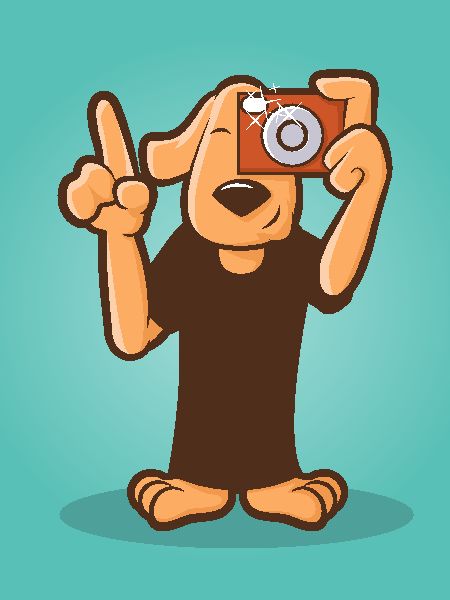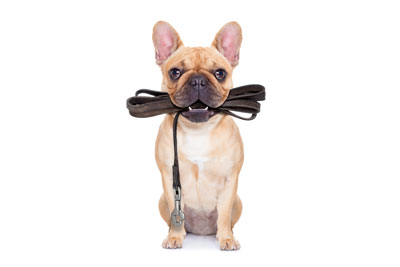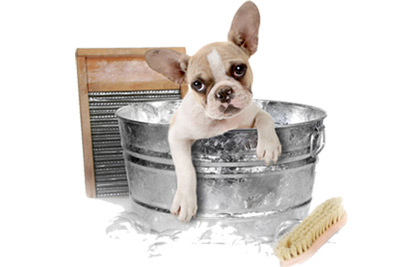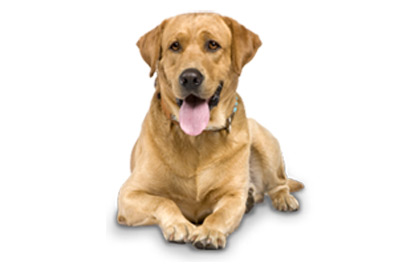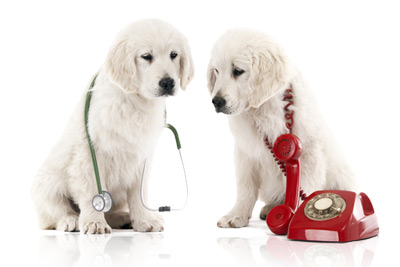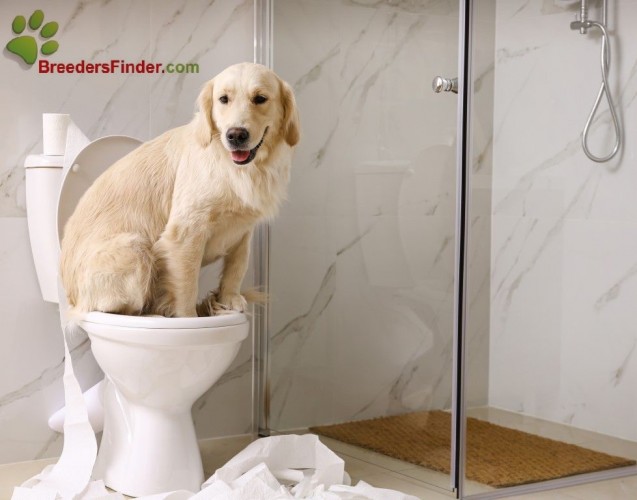
Why isn't my 3 month old puppy clean yet? Chronicle by Johanne Parent, breeder, canine educator, canine behavior coach and trainer.
- 05 Nov, 2020
- The Dogs
In recent months, the number of newly adopted puppies has skyrocketed. These new owners, ill-prepared and/or ill-informed, complain about the lack of cleanliness of their puppy.
Seriously? If it takes 2 years for a toddler to learn to be clean, how can you believe that a puppy is clean almost instantly when you adopt it?
First of all, be aware that a puppy does not have control of his sphincters until he is at least 4 months old. When he feels like it, it's now. He must therefore be taught to restrain himself and relieve himself in the right place. How to do it?
Restrict his environment
A puppy, which is not yet clean, should not be left loose in the house. Imagine a puppy frolicking from the kitchen to the living room, via the bathroom etc. When he feels the need to pee, he will be unable to hold himself in the right place, if the environment is too large for him.
Ideally, we should use a portable enclosure (puppy pen) or a crate large enough for him to lie down and stand upright. Using the crate or pen will help you get your puppy clean more quickly. Caution: the puppy must not spend the whole day without going out! He also needs to run, play and social interaction.
Outside too, access should be restricted. To facilitate potty training, rain or shine, always put your puppy on a leash. Always take him/her to the same place for toileting. You can easily define a square equivalent to 3 times the length of the adult dog to establish the needs area. This zone will also have the long-term advantage of being able to send your dog to relieve himself on command before a car ride or a walk in the neighborhood on a leash. This avoids marking during the walk. In addition, the walk becomes the reward for having relieved himself in the right place. This area can be marked with a small fence, or with small crushed rock. This area should be accessible in both summer and winter.
100% active supervision
When you have your eyes glued to the computer screen or your cell phone, you can't adequately monitor your puppy free in the same room as you. Active monitoring means that your eyes are able to keep an eye on your puppy. If you can't do this, then it's best to place him in a pen or crate as mentioned above.
When he defecates in the right place, you must be present to reward him with your voice (Yes! Good dog!) at the same time he is making his pee or poop. Also, if you see him sniffing the floor in the house, you must react immediately by calling your puppy by name (you can clap your hands to get his attention) while walking with him to the door to go outside at the right place... on a leash.
Outside, it's important not to touch or pet your puppy before he's done his business. If you play or pet your puppy, he may forget he wants to!
Choose a commandment that suits you, such as: "pee", "poop", "needs outside". Whatever command you choose, always use the same one.
Rewarding with a treat is not recommended. First of all, treats between meals will play a role in keeping the puppy unclean. Secondly, a smart puppy will quickly learn to ask for the door to make 2 drops of pee and ask for a treat . 25 times a day!
You take him out and he doesn't do anything? Enter the house and place your puppy in his crate or keep him close to you on a leash. Come out with your puppy 15 minutes later. Don't leave him free if he hasn't defecated.
Water and food
Although most veterinarians will recommend water at will, for potty training, it is better to offer water several times a day than to give free access to the bowl full of water at all times. Again, common sense is required. In hot weather, water should be given full time to avoid dehydration or heat stroke. That being said, offer water at every meal, as well as during playtime. So water 8 to 12 times a day according to the puppy's needs.
Meals should be given at fixed times. Depending on the breed, he will ideally be fed 3 or 4 times a day until the age of 3 months, then 2 or 3 times a day until he is at least 6 months old. By offering the food at a fixed time, you get your puppy used to regulating his intestines, which greatly facilitates toilet training.
Leave his meal for 15 to 20 minutes maximum, then remove his bowl. You will offer him food at the next meal. Treats between meals should be avoided, since they interfere with potty training. Until the child is potty trained, treats with positive reinforcement will often interfere and interfere with potty training.
Reinforcement
In positive reinforcement, his voice will be used as a reward for potty training with a puppy. He will quickly learn that your "Yes! pee good dog" is the reward. He will be proud to have succeeded and to come back to you to receive a caress.
The treat is not an obligation of positive reinforcement. And, even if I repeat myself, it will often interfere with the puppy's toilet training.
When to take the puppy outside?
The puppy will need to go outside as soon as he wakes up in the morning, within 15 minutes of eating and after each sleep period. He will also need to go outside during periods of play or excitement.
Pee Pads: yes or no?
Pee pads are becoming more and more popular. These training pads have qualities, but also many flaws. If your goal is to get a clean dog outside, you are working twice for nothing. It will be much easier to teach him directly to do outside.
Many puppies will learn that peeing on cloth or paper is allowed. So I often have adult dogs in consultation for lack of cleanliness, because they will urinate on the bed, sofa, cushion, carpet, the child's coat forgotten on the floor of the entrance... or on magazines for puppies put clean on newspaper or disposable pee pads.
When to use a pee pad?
If you refuse to get up at night to go outside with your puppy. But if you take the trouble, know that in just a few days, he could surprise you and sleep through the night! The ideal is to make him sleep in a crate in your room. You will hear him and take him out in time.
It is also used if the puppy is left alone all day long while you are at work. Obviously a puppy will only be left alone for 2 to 3 hours during the day...
The right method to use a pee pad is to place it in a raised tray. The puppy will have to step over with his 4 legs to enter the tray and relieve himself. Otherwise, he will often place his front paws on the pee pad and pee on the floor next to it... The pee pad must also be big enough to make several pee.... otherwise place 2 trays with each 1 pee pad inside.
When not to use a pee pad?
The use of a pee pad teaches the puppy that he is allowed to relieve himself in the house. If you don't want a lifetime subscription to the pee pads with your Chihuahua, it's better to think about it first. It is a bad idea to use pee pads if you have carpets in the house. In short, if your goal is to have a clean dog outside, it's better to avoid pee pads.
Note also that disposable pee pads are toxic for your puppy if he ingests the jelly inside. It is better to use washable cloth pee pads.
For any other question regarding a cleanliness problem with your puppy or adult dog, do not hesitate to contact Cynophilo.
Author : Johanne Parent
dog breeder, canine educator, canine behavior coach and trainer.
cynophilo.com
Published by BreedersFinder.com at www.breedersfinder.com



